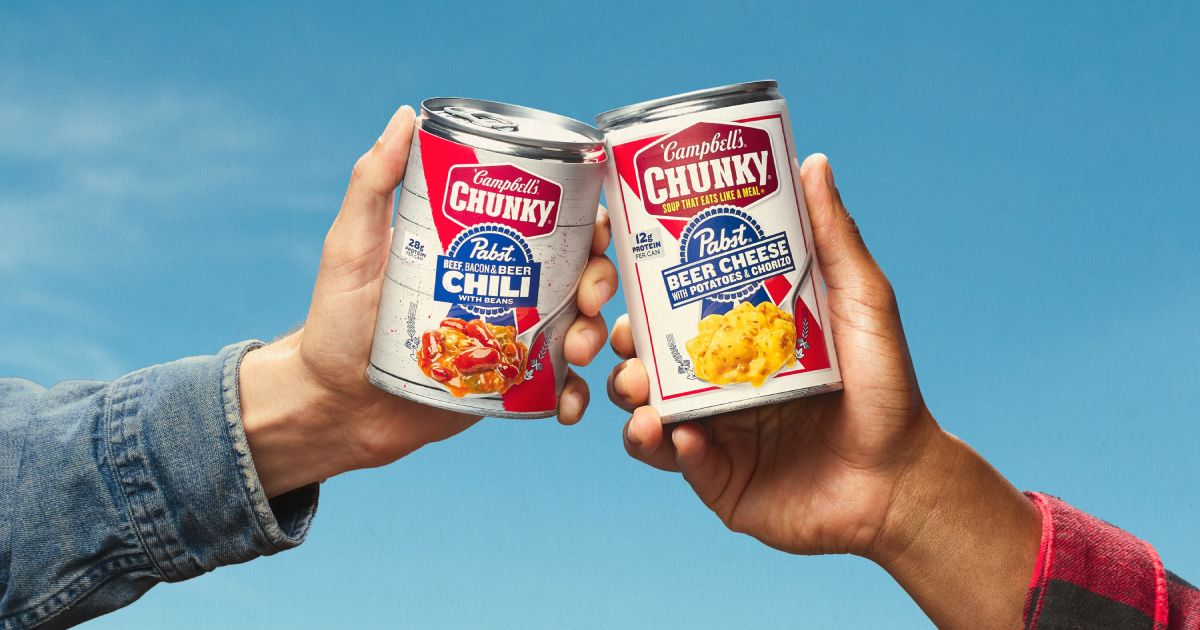Alcohol Brands Tap Collaborations

By Dylan Desmaris
Amid a decline in alcohol consumption, beverage companies are serving up collaborations and focusing on licensing as they work to tap into changing consumer behavior.
In many ways, these collaborations are an expansion of tried-and-true strategies that have been deployed across the category for many years. But they are now taking on a greater importance for alcohol companies as they adjust to a market more attuned to social media currency than standard TV commercials.
The turn toward increasing alcohol collaborations also comes in the face of a Gallup poll that showed that only 54% of Americans drink alcohol, the lowest percentage since the survey began in 1939. And even among those surveyed that drink, they are partaking less, Gallup said. Additionally, the World Health Organization reported that alcohol consumption in Europe declined by 0.5 liters per capita between 2010 and 2020.
In releasing earnings earlier this year, Molson Coors and Corona distributor Constellation Brands reported volume declines of 7% and 3.3%, respectively. Anheuser-Busch and Sam Adams parent Boston Beer Co. reported beer volume declines of 1.9% and 0.8%, respectively.
In an effort to keep their brands relevant in a market where people are drinking less, many alcohol companies released non-alcohol drinks. Other alcohol companies have paired their brand with food and beverage labels in order to connect with new consumers.
Pabst Blue Ribbon (PBR), for example, has partnered with Campbell’s for limited edition products that features its ingredients, including the Beer Cheese with Potatoes & Chorizo soup and Beef & Beer Chili that will be available exclusively at Walmart. And then there is Sazerac’s Kahlua brand, which launched a partnership with Dunkin’ in August for Kahlúa Dunkin’ Caramel Swirl Cream Liqueur. It’s 16% ABV and a mix of toffee, vanilla, and caramelized sweetened milk blended with coffee and chocolate. Sazerac licensee B&G Foods also fields Southern Comfort, Fireball, and Buffalo Trace under a co-brand with grill maker Weber.
“There has been a lot written about the state of the alcohol business, particularly among younger people, so licensing can be a way to get to a new consumer who may not consume the alcohol as much but it gives them an opportunity to interact with the brand and the lifestyle it might engender,” said Rachel Humiston, VP of Client Services at Brandgenuity, which represents Sazerac for licensing. “We are seeing bigger extensions that will live on and then there are unusual combinations that will come in and out that may be unexpected but gets people into the franchise.”
The Corona brand, for example, recently launched pre-orders for limited edition baseball and slow-pitch gloves ($420) with licensee Absolutely Ridiculous innovation for Athletes (ARiA).
Because while revenue from the increase in brand collaborations may not make up for sluggish sales, they can be a cost-effective means for broadening brands’ audiences. And, once consumers are introduced to a franchise, companies can focus on retaining them and building brand loyalty.
“In a market where there is noise all the time and staying relevant in the pop culture conversation is important, collaborations are a far less expensive way of doing it than a huge marketing campaign,” said Debra Joester, President of The Joester Loria Group, which represents Constellation Brands (Modelo, Corona, Pacifico, Robert Mondavi, and other labels). “Sports, music sponsorships, and other events are part of a menu for staying pop culture and conversation relevant and making sure a brand doesn’t slip away.”




